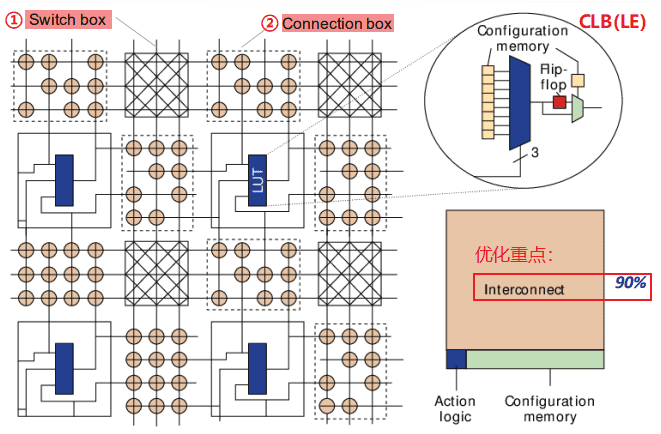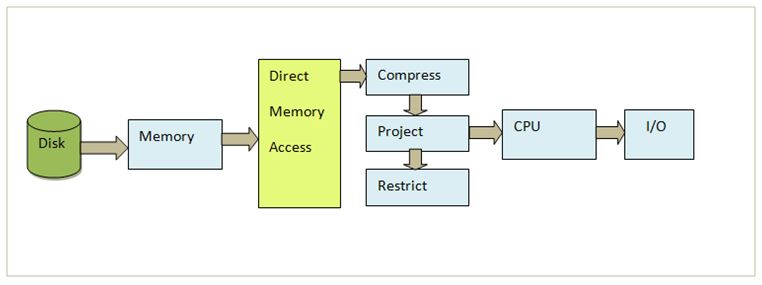
Let’s take a well-known emulator, UAE, emulating an Amiga.


Sometimes even a modern CPU working at 100 times the speed of the retro computer is not enough, so the emulator has to use approximation, skip emulation of some less important parts, or assume some standard work of the emulated system without extraordinary usage. This requires a lot of CPU power to emulate even an old and slow retro computer. So a traditional emulator has to take care of all these parts and try to emulate the whole orchestra at the same time by quickly “running” from one chip to another. The CPU, video chip/logic, audio chip, memory arbiter – all of them are working at the same time. This is a tricky method of emulation because real hardware has many chips and all of them work in parallel.
#Fpga how it works code#
Traditional emulators on CPUs execute code sequentially. To go back to the original question, then, why FPGA, if it’s also just emulation? Well, FPGA emulation is fundamentally different than emulation on a CPU. So it’s okay to call FPGA cores emulators, unless they are proven to be replicas. The most widely used CPU cores – the Z80 (T80) and MC68000 (TG68K) – are pure functional emulations, not replications. Currently, it’s hard to find a core that can truly be called a replica – most cores are based on more-or-less functional recreations rather than true circuit recreation. Anything else is emulation, since it uses different kinds of approximation to meet the same objectives. :) From my point of view, if the FPGA code is based on the circuitry of real hardware (along with the usual tweaks for FPGA compatibility), then it should be called replication. Some people insist it’s not emulation but rather true hardware replication, while any simulation using a traditional CPU should be referred to as emulation.
#Fpga how it works how to#
There are debates about how to refer to the process of simulating real hardware using FPGA. “Why do you need to use FPGA while other proven solutions exist, such as Raspberry Pi?” Why Use an FPGA? ¶Ī typical potential user will eventually ask: Including functions that, together, act as a comprehensive multi-core processor. The programming can be a single, simple logic gate (an AND or OR function), or it can involve one or more complex functions, The user programs the hardware circuit or circuits.
#Fpga how it works software#
That software can later be replaced or deleted, but the hardware chip remains unchanged. With these chips, a user can write software that loads onto a chip and executes functions. It can’t be programmed you get what you get. With a standard chip, such as the CPU/GPU in your laptop, Arduino or Raspberry Pi the chip is fully baked. Those circuits, or arrays, are groups of programmable logic gates, memory, or other elements. Taken a step further, FPGAs are integrated circuits (ICs), which are sets of circuits on a chip (that’s the “array” part). What is an FPGA anyways? ¶įPGA stands for field-programmable gate array, essentially, an FPGA is a hardware circuit thatĪ user can program to carry out one or more logical operations. There are no restrictions on how these boards are manufactured and sold, or by whom any third party Boards are considered DIY (do it yourself). Schematics and Gerber files are available to download. This board adds a 7-port USB hub that sits under the main board. Only two cores use this feature, so it is only for enthusiasts. You still can have a real-time clock without the board if MiSTer is connected to Internet This board is plugged into the LTC connector and provides a real-time clock (RTC). This board is not required to run most cores. HDMI scaler code requires around twice as much time to compile, while compiling for VGA-only This board also helps for core development Or you want to put the MiSTer inside a case. This board is useful if you prefer VGA over HDMI

It provides a legacy VGA output (6 bits per component), analog audio (3.5mm phone jack),ĭigital optical audio, buttons, and LEDs. This board plugs into the GPIO1 connector of the DE10-nano board. This SDR SDRAM on a daughter board is required for most cores to emulate a retro memory module. Whilst the DE10-nano has fast DDR3 memory, it cannot be used to emulateĪ retro EDO DRAM due to a high latency and shared usage from the ARM side. This small board plugs into the GPIO0 connector of the DE10-nano board. With just one additional board (SDRAM), you will be able to use almost all cores. MiSTer starts from entry level as a bare DE10-nano board. MiSTer adds several daughter boards to the original DE10-nano board.

For purists, VGA is still available, and it outputs original video resolution. MiSTer scales original video resolution to a standard HDMI resolution (usually 1280x720p60), so you don’t need to look for some ancient monitor with VGA input supporting non-standard resolution and frame rates.


 0 kommentar(er)
0 kommentar(er)
